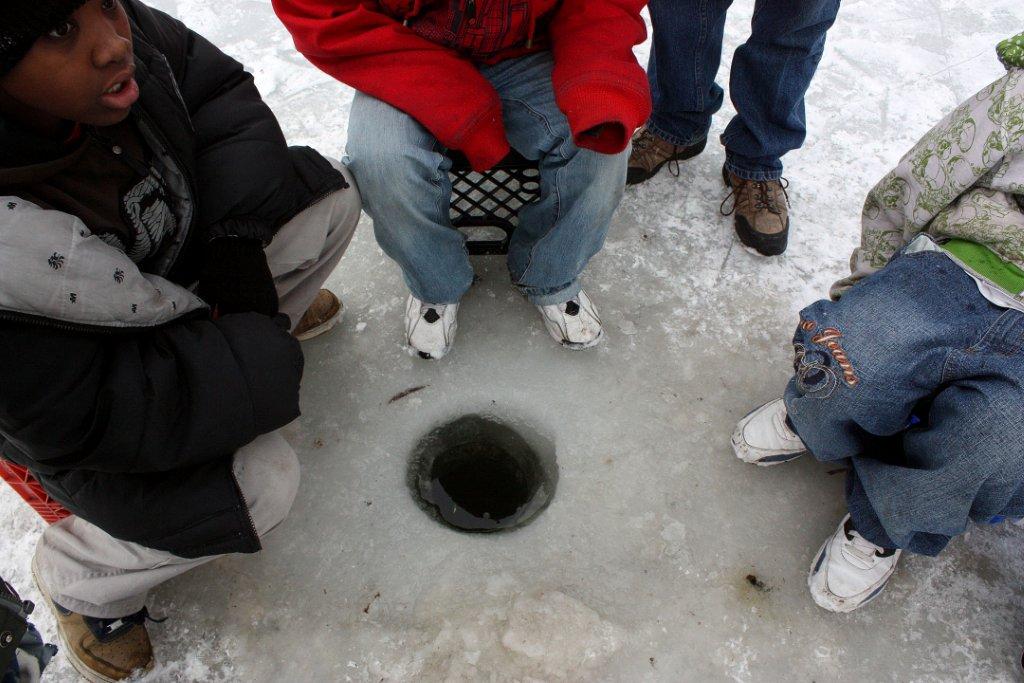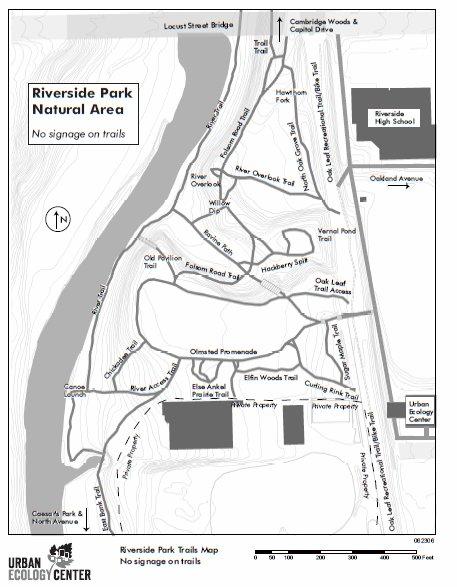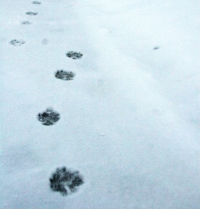Washington Park - Ice!
One of water's unique properties is that when it freezes it becomes less dense, which is why in a pond water freezes from the top down. This allows fish, amphibians and other critters to survive a harsh winter underwater and allows humans to partake in such crucial activities is ice skating and ice fishing.

A great way to study phenology is to do what our Young Scientists do: find and observe a body of water. Record temperature, water level, and ice cover and thickness weekly and graph it over time. Soon you can predict changes from year to year and note patterns over time.
Menomonee Valley - Snow!
Who doesn't love a fluffy blanket of snow in the winter? Before answering, consider that snow cover may mean life or death for some of our wildlife. Some warm-blooded mammals and birds take advantage of the insulating properties of snow by denning or roosting in it.

Another phenology observation that is easy to track is snow depth. It's as simple as carrying a yardstick. Make a simple graph of snow depth in your yard by date. Then get ready to tell your grandkids, "when I was your age the snow was up to my...."
Riverside Park – Tracks!
 February snow creates ideal conditions for looking for animal tracks in an urban forest like Riverside Park. We have ideal conditions to track three specific animals. Use our trails map to find the trails metioned below (or pick one up at our reception desk).
February snow creates ideal conditions for looking for animal tracks in an urban forest like Riverside Park. We have ideal conditions to track three specific animals. Use our trails map to find the trails metioned below (or pick one up at our reception desk).
Look near the "Elfin Woods Trail" for Cottontail Rabbit tracks:

Search within the water-drop shaped "Olmsted Promenade" for Gray Squirrel tracks:

Explore the hillside between the "Old Pavilion" and "Chickadee" trails for Raccoon tracks:

With continued stewardship we hope to create a richer ecosystem. Maybe next year you’ll be able to count even more tracks! (Enjoy searching for tracks? Look for an upcoming post about tracking like a crime scene investigator!)
Summary
The word phenology at its root means "the study of appearances". We often equate it to the appearances of birds, bugs, or blooms, especially in spring. Water is always around but sometimes "appears" to us as snow, ice, floods or storms. Understanding the importance of these events to the natural world is a great way to get started in phenology. If you need help or would like to explore other areas of phenology, please contact any member of the phenology team. We'd love to hear from you!
This is one of our monthly phenology posts. To learn more about phenology, be sure to read this post.





